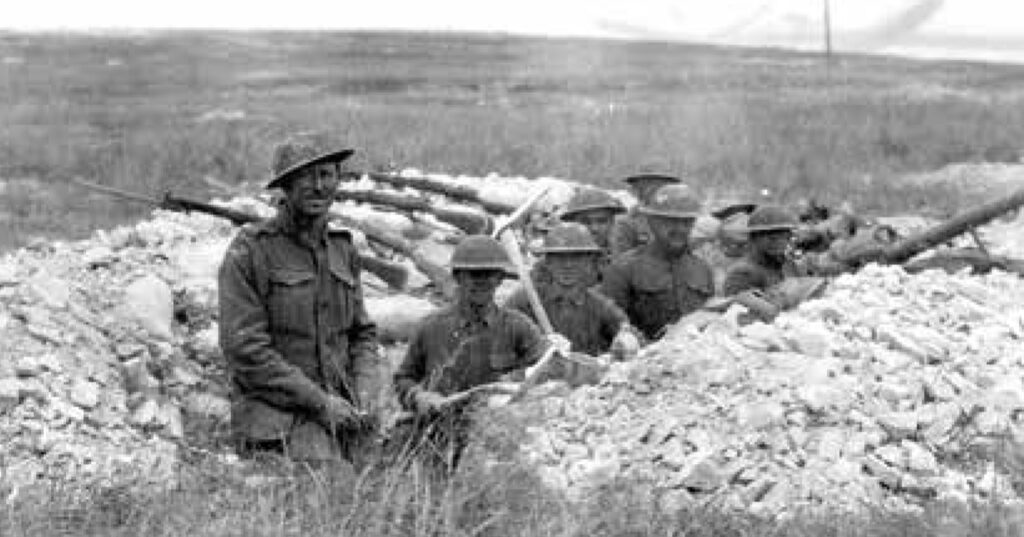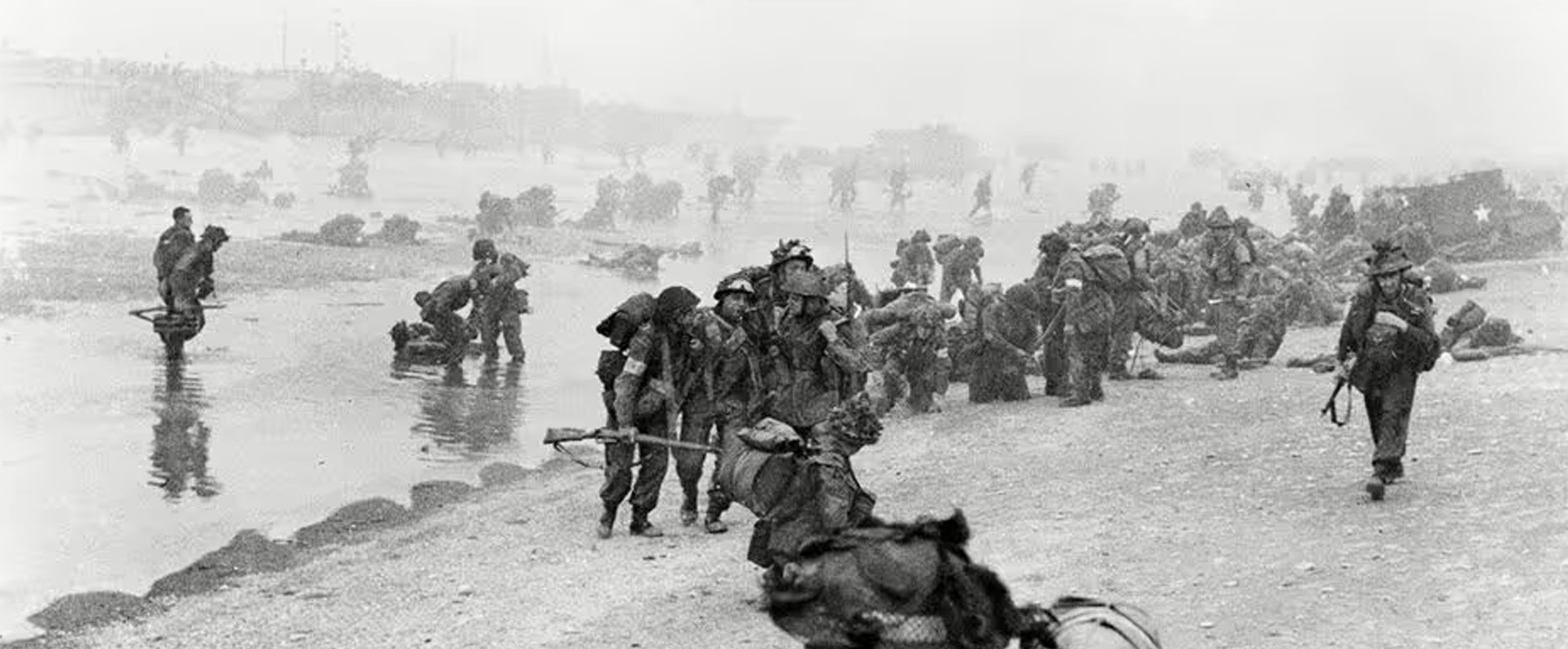
Published in Britain at War in August 2018.
Sergeant Henry Dalziel VC: boldness
Henry Dalziel was born in Irvinebank, North Queensland, Australia, on 18 February 1893. He was the son of James Dalziel, a miner, and his wife Eliza (née McMillan). He attended local schools, including Irvinebank School.
As young boys, he and his brother, Victor, discovered tin samples, which led to the opening of the Boulder Mine, near Emuford, Queensland. After finishing his education, Dalziel, who was often known as “Harry”, worked as a fireman with the Queensland Government Railway.
In January 1915, five months after the start of the Great War, Dalziel, by then aged twenty-one, enlisted into the Australian Imperial Force (AIF). On 16 April 1915, Dalziel embarked from Brisbane with reinforcements for the 15th Battalion (Queensland and Tasmania). Incidentally, his brother, Victor, also served in the AIF during the Great War.
In July 1915, Dalziel joined the 15th Battalion at Gallipoli, Turkey, and it was here, serving in the machine-gun section, that he became known as “Two Gun Harry”. After taking part in the Battle of Sari Bair, Dalziel was invalided to the UK, via Egypt, on 29 August 1915, suffering from rheumatism.
Dalziel, a no-nonsense Australian and a soldiers’ soldier, spent the best part of a year recuperating and was treated at the 3rd London General Hospital. On 14 August 1916, he left for the Somme and was part of the Allied line at Bois Grenier. In France, Dalziel took part in actions at Mouquet Farm, Pozières, Flers and Gueudecourt. In September 1916, he was appointed driver and, in the spring and early summer of 1917, he fought at Bullecourt and the capture of Messines Ridge. However, he reverted to being a private, at his own request, on 31 July 1917.
On 16 October 1917, Dalziel was wounded by shrapnel at Polygon Wood, Belgium, and thirteen days later he was evacuated to the UK for a second time. However, once again, he made a good recovery and was back in France by May 1918, rejoining the 15th Battalion as a gunner.
It was on 4 July 1918 that Dalziel showed such bravery at the Battle of Hamel that he became the 1,000th recipient of the VC, Britain and the Commonwealth’s most prestigious award for gallantry in the face of the enemy. The Battle of Hamel was a successful attack by the Australian and US Armies, supported by British tanks, against German positions in and around the town of Le Hamel in northern France.
The citation for Dalziel’s VC, published in The London Gazette on 17 August, 1918, details his crucial part during the battle: “For most conspicuous bravery and devotion to duty when in action with a Lewis gun section.
“His company met with determined resistance from a strong point which was strongly garrisoned, manned by numerous machine-guns and, undamaged by our artillery fire, was also protected by strong wire entanglements. A heavy concentration of machine-gun fire caused many casualties, and held up our advance.
“His Lewis gun having come into action and silenced enemy guns in one direction, an enemy gun opened fire from another direction. Private Dalziel dashed at it and with his revolver killed or captured the entire crew and gun, and allowed our advance to continue. He was severely wounded in the hand, but carried on and took part in the capture of the final objective.
“He twice went over open ground under heavy enemy artillery and machine-gun fire to secure ammunition, and though suffering from considerable loss of blood, he filled magazines and served his gun until severely wounded through the head. His magnificent bravery and devotion to duty was an inspiring example to all his comrades and his dash and unselfish courage at a critical time undoubtedly saved many lives and turned what would have been a serious check into a splendid success.”
Yet again, Dalziel had been severely wounded. Not only did he lose his trigger finger on his injured hand, but his skull was so badly smashed in that his brain was exposed. Only the best medical treatment back in England saved his life and he eventually spent nearly four months in hospital. He received his VC from George V at an investiture at Buckingham Palace on 13 December 1918.
Unsurprisingly, his VC action marked the end of his frontline action but altogether, during four years of fighting, Dalziel had been injured no less than thirty-two times. In January 1919, Dalziel embarked to return to his native Australia where he was given a hero’s welcome. On 16 June of that year, he was discharged from the AIF, medically unfit.
On 8 April 1920, Dalziel married Ida Ramsay at Congregational Manse, South Brisbane – a nurse that he had met during his recovery in Brisbane. Dalziel had been unable to take up his former job on the railways because of his wartime injuries and for a time he tended an orchard nearby. However, he then took up the offer of land at a solider settlement block in Queensland, where his wife had to do the bulk of the farm work on the smallholding that they called “Zenith”. During the Great Depression, Dalziel travelled to Sydney to work in a factory, leaving his wife on their smallholding. However, when his wife fell ill, he returned to Queensland, although in 1933 they settled n Brisbane where Dalziel could not find work.
After he and his first wife divorce, Dalziel remarried and he and his second wife, Elsie Kanowski, went on to have three children. After the outbreak of the Second World War, he rejoined the Army in June 1940, finally ending his military service, with the rank of Pioneer Sergeant, in December 1943. In June 1956, he attended the VC centenary commemorations in London’s Hyde Park as part of the Australian contingent and he later went on to visit the site of his VC action at the Battle of Hamel in France.
Dalziel died on 24 July 1965 at the Repatriation General Hospital in, Greenslopes, Brisbane, shortly after suffering a stroke. He was seventy-two and was cremated with full military honours. Dalziel is commemorated at several locations in Australia and his medals are on display at the Australian War Museum after they were purchased by a benefactor at auction in 2010.
Download a PDF of the original Britain at War article
For more information, visit:
LordAshcroftOnBravery.com


